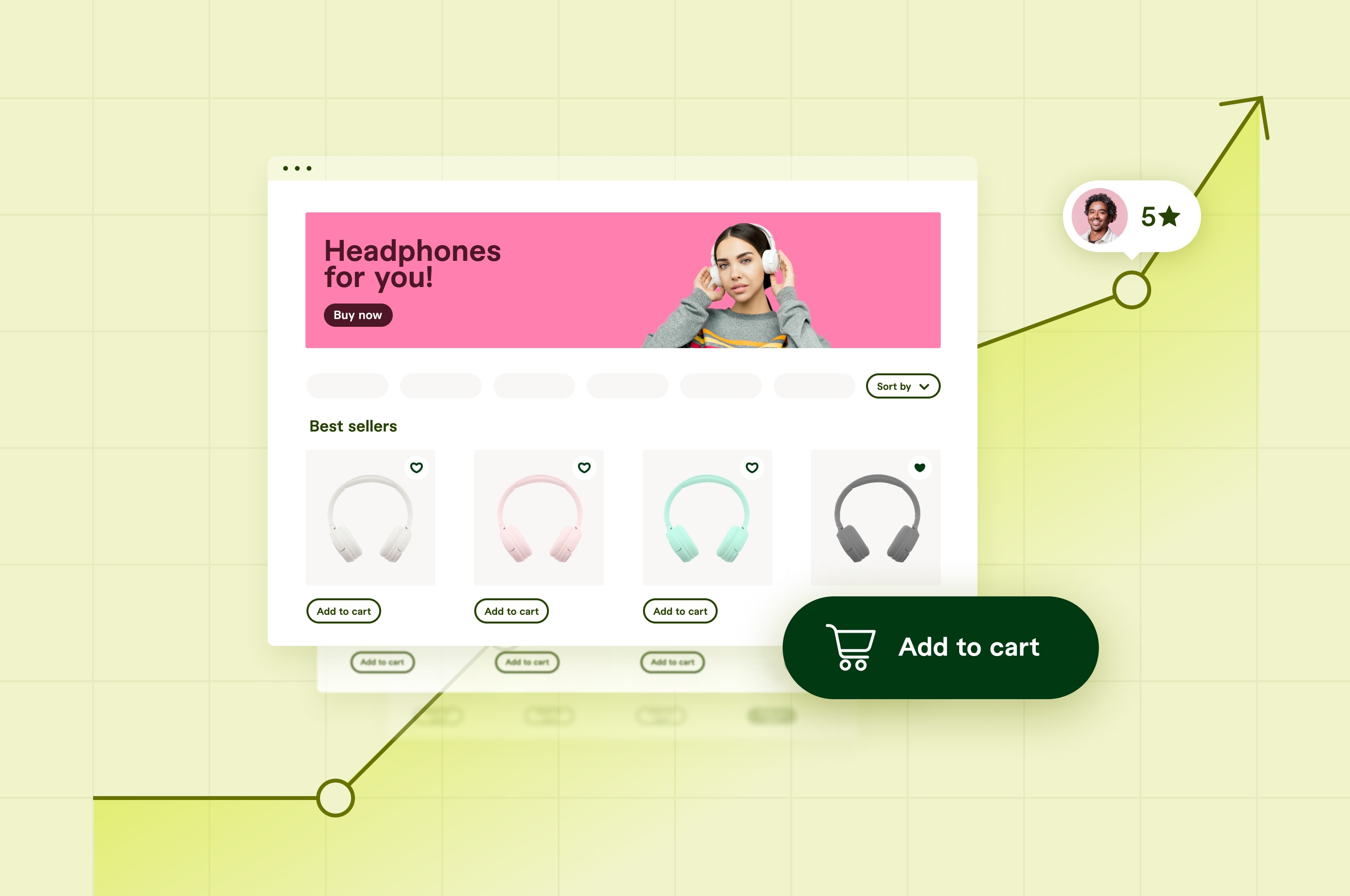15 Best Customer Retention Strategies: From The Pros
Discover effective data-backed customer retention strategies to fuel the growth of your small or medium-sized business (SMB). From fostering customer loyalty to driving repeat business, explore the top 15 strategies that can help your SMB thrive.
 July 9, 2023
July 9, 2023 13 minute reading
13 minute reading
Customer retention is vital for the growth and success of any small or medium-sized business (SMB).
Not only does it cost less to retain existing customers than to acquire new ones, but loyal customers also tend to spend more and act as brand advocates. One study shows that repeat customers generate 300% more revenue than first-time customers.
By keeping customers, businesses can benefit from repeat purchases, increased loyalty, positive word-of-mouth recommendations, and a higher lifetime value.
We spoke to 22 small business owners and business development managers on the customer retention strategies that have worked best for them in 2023.
Using their expert advice and top research studies, we put together 15 customer retention strategies that SMBs can implement to foster customer loyalty, drive repeat business, and fuel long-term growth. We’ve also included real life examples of how top brands put these strategies into practice.
What are customer retention strategies?
Customer retention strategies are a set of techniques and practices implemented by businesses to encourage existing customers to continue patronizing the business’s products or services. These strategies aim to build long-term relationships with customers, increase their loyalty, and, ultimately, maximize their lifetime value.
Effective customer retention strategies involve various elements such as personalized communication, exceptional customer service, loyalty programs, regular engagement, and proactive problem-solving.
By focusing on retaining existing customers, businesses can reduce churn, boost customer satisfaction, and create a strong foundation for sustainable growth.
Work with a marketing strategist to build your customer retention plan
Top 15 customer retention strategies that work
Here are 15 customer retention strategies for ecommerce brands, along with examples:
1. Personalized email marketing

A personalized email from Netflix.
Send targeted and relevant emails to customers based on their preferences, purchase history, and browsing behavior. Ninety percent of leading marketers say personalization significantly contributes to business profitability.
“We rely on social media engagement and personalized email campaigns to retain customers,” says Marcus Hutsen, business development manager at Patriot Coolers. “We introduce every new product line via social media and email. Our emails are customized based on customer journeys.”
A study by Epsilon shows that consumers are 80% more likely to make a purchase when a brand offers personalized experiences.
Email marketing is an important content marketing channel for small businesses and should be written in such a way that it boosts leads and drives sales.
Zeeshan Akhtar, head of marketing at Mailmodo, runs a newsletter called The Idealetter that offers campaign ideas for its customers.“We often work with freelancers to create and write email newsletters,” Akhtar says. “We usually hire freelancers from LinkedIn or Fiverr.”
Hire an email marketing specialist on Fiverr to help you get started with personalized emails.
2. Loyalty programs
A loyalty program is a great way to reward customers for coming back to your brand, and helps them feel a sense of belonging and brand identity.
Implement a loyalty program that rewards customers for their repeat purchases, referrals, or engagement. Loyalty program members spend 12% to 18% more per year compared to non-members. According to a 2022 study by Yotpo, 73.3% of respondents said they would sign up for a loyalty program. This is higher than the 67.6% of global respondents who said the same.
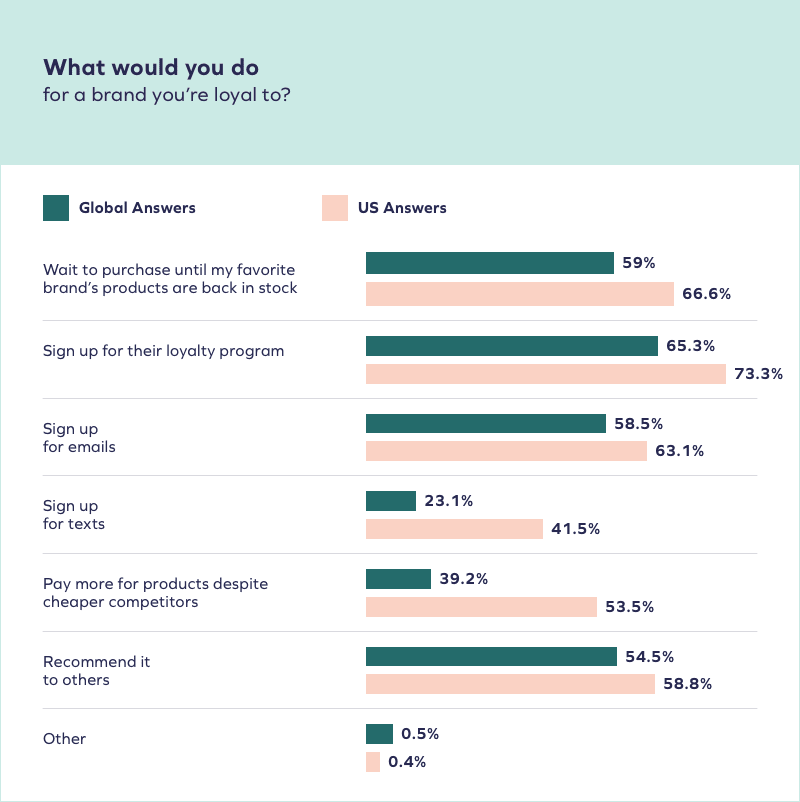
Sephora’s popular Beauty Insider program rewards customers with points for their purchases, which can be redeemed for samples or exclusive merchandise.

“Creating a personalized loyalty program tailored to our customers’ preferences has been highly effective for our company,” says Peter Michaels, CEO of Yeespy. “We monitor customer satisfaction scores, repeat purchase rates, and customer churn rates to measure the effectiveness of our loyalty program.”
A loyalty program can include discounts, reward points for free products, or even other special services.
“One of the most effective ways we’ve managed to retain our customers is by offering a full-service customer loyalty program,” says Matt Little, co-owner of Damien McEvoy Plumbing. “We reward our loyal customers and give them exclusive benefits. Whether it’s a discounted service, priority scheduling, or special promotions, we want to ensure our customers continue to choose us for their plumbing needs.”
3. Exceptional customer service
Provide prompt and personalized customer service across various channels, such as live chat, social media, or email. According to a 2022 study on customer trends by Zendesk, 81% of consumers said a positive customer service experience increased the chances of them making another purchase.
Great customer service means going beyond what’s expected to meet the needs of customers. Businesses can do this by providing fast and personalized support through various channels, like live chat, social media, and email. This results in a smooth and responsive experience for customers.
Tesla is a great brand example of exceptional customer service. It provides mobile repair services, allowing customers to have their cars fixed at their own homes, at a time that’s convenient for them.
“Our data analysis revealed that highly rated customer support is a primary driver of repeat purchases,” says Ryan Mckenzie, co-founder and CMO at Tru Earth. “As a result, we invested in additional resources for customer service and experienced a boost in customer retention.”
Find a customer service assistant for hire
4. Personalized product recommendations
Use data analytics to offer personalized product recommendations to customers based on their browsing and purchase history. A study by Barilliance found that product recommendations account for up to 31% of ecommerce site revenues.
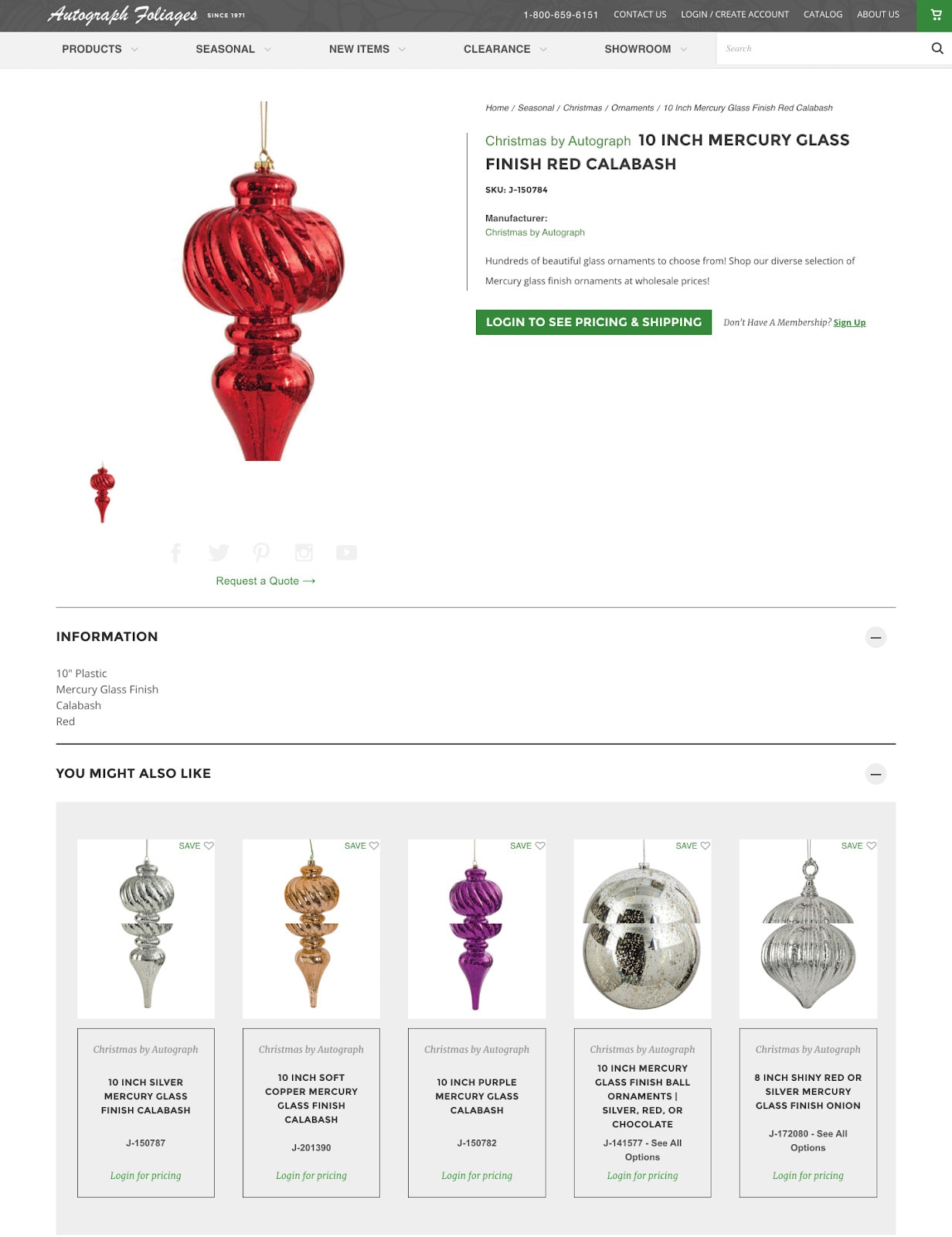
In the example from Autograph Foliages, a retailer displays personalized product recommendations based on a visitor’s browsing history. This includes the same product in different colors, and similar products, giving users more options to choose from.
5. Social media engagement
Engage with customers on social media platforms to build relationships, address queries, and create a sense of community.
According to Forbes, 62% of millennials say if a brand engages them on social networks, they’re more likely to become a loyal customer.
Opus Art Supplies is a company using social media to establish a community of loyal customers. It showcases customer artwork on its website through Instagram galleries. This method builds engagement with existing customers and reaches new audiences at the same time.
Creating a social calendar can help a brand stay consistent, as algorithms support brands that post and engage with people consistently. If you don’t have the time to create a social calendar, delegate this to a social media manager who engages with your audience, tracks metrics, and analyzes and improves patterns.
6. Post-purchase follow-ups
Send post-purchase follow-up emails to thank customers for their purchase, gather feedback, and provide additional resources or support. Seventy percent of customers become repeat buyers if they feel valued after their initial purchase.
According to Klaviyo data, post-purchase emails have an almost 17% higher open rate than average email automations, resulting in good conversion rates. “Post-purchase emails and SMS are a great time to get the flywheel going, re-engaging existing customers to queue up their next purchase,” Sharon Goldstein, CEO of LimeSpot, wrote in the report.”
6. Post-purchase follow-ups
Send post-purchase follow-up emails to thank customers for their purchase, gather feedback, and provide additional resources or support. Seventy percent of customers become repeat buyers if they feel valued after their initial purchase.
According toKlaviyo data, post-purchase emails have an almost 17% higher open rate than average email automations, resulting in good conversion rates. “Post-purchase emails and SMS are a great time to get the flywheel going, re-engaging existing customers to queue up their next purchase,” Sharon Goldstein, CEO of LimeSpot, wrote in the report.”
For example, this order confirmation email from Fenty Beauty does an excellent job of providing customers with the information they need after making a purchase. It is clear and to the point, focusing on what matters most to the customer.
7. Exclusive offers and discounts
Provide exclusive offers, discounts, or early access to new products for loyal customers. According to Forrester, 77% of consumers have chosen, recommended, or paid more for a brand that provided a personalized experience.
ASOS offers a 10% discount to students and frequently runs exclusive sales for its loyal customers.
These enticing incentives help in driving increased sales, fostering customer loyalty, and attracting new customers.
“We encourage all our customers to help us spread the word about our passion by becoming our partners,” says Simon Bacher, CEO and Co-Founder of Ling App,. which runs an affiliate program as a customer retention and new customer acquisition strategy. “They can sign up for the Ling Affiliate Marketing Program for free and earn a 25% commission, with uncapped earning potential.”
8. Gamification
Incorporate gamification elements such as loyalty points, badges, or progress bars into the shopping experience to engage customers and encourage repeat purchases.
According to GlobalNewsWire, the gamification market increased from $14.87 billion in 2022 to $18.63 billion in 2023, growing by 25.3% per year.
For instance, KFC Japan launched a Shrimp Attack campaign to promote its shrimp menu. The game required players to slash at ebi shrimp that appeared at the bottom of their screen. The goal was to protect the castle of KFC’s chicken kingdom. Twenty-two percent of people who played the game redeemed their voucher in-store.
Another example is Dropbox, which increased sign-ups by 60% using gamification elements such as earning additional storage space through referrals.
Gamification is truly exceptional in its ability to captivate the mind and appeal to people’s passion for rewards, progression, and competition.
9. Subscription programs
Offer subscription-based models where customers receive regular deliveries of products or access to exclusive content. Subscription businesses have grown by more than 300% over the past seven years.
Dollar Shave Club, a popular subscription business in the US, offers convenient and cost-saving shaving products to its approximately three million subscribers.
Businesses can offer regular deliveries of products or access to exclusive content through subscription-based models. This provides convenience and value to customers while fostering customer loyalty and engagement. The recurring revenue stream allows for better predictability and stability of business operations, and customers enjoy the convenience of receiving products.
10. Remarketing and retargeting
Use targeted advertising to reach out to customers who have previously shown interest in your products but have yet to make a purchase. According to Invesp, three out of four online viewers now notice and consider retargeted ads.
Madewell uses Facebook retargeting ads to re-engage site visitors and encourage them to purchase.
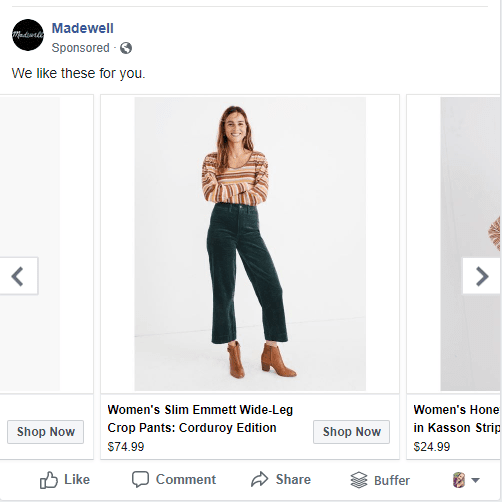
11. User-generated content
Encourage customers to share their experiences, reviews, and photos on social media or on your website.
User-generated content (UGC) is the modern-day word of mouth, as people ultimately trust other people. Consumers are 2.4 times more likely to view UGC as authentic compared to content created by brands. This highlights the importance of investing in an authenticity-driven social marketing strategy.
Starbucks’ White Cup Contest invited customers to decorate their cups and share the images on social media, generating buzz and engagement.
This serves as authentic and unbiased social proof. When customers share their positive experiences or showcase how they use a product, it creates a level of trust and credibility among potential customers.
“We run a dedicated customer support phone line and email to retain our repeat customers,” says Ubaldo Perez Jr, CEO of HUSH Anesthetic. “Frequently, we keep in regular contact, either during ordering or over social media in conjunction with UGC and other brand highlights. We believe in our products; we just have to show up to make sure our customers are satisfied too.”
12. Community building
Foster a sense of community through forums, social media groups, or customer events.
On average, brands with communities see a 1,352% ROI after just two years. This increases as communities age. After 10 years, brands can see as much as a 10,000% ROI. A great example is the way Red Bull harnesses social networking, sponsorship, and word-of-mouth to engage fans with events like music festivals and esports championships. The brand adapts its marketing strategy to cultivate closer customer relationships and uphold its dynamic, high-energy image.
Community building requires strong communication and content skills. While you can build an in-house team, you can also outsource community building to a freelance community manager on Fiverr.
13. Influencer partnerships
Collaborate with influencers or brand ambassadors to reach and retain customers. In fact, the ROI of influencer marketing is 11 times greater than banner ads.
Heads Up For Tails, a pet care brand, has more than 100,000 Instagram followers. It creates diverse content formats and collaborates with influencers to increase its customer engagement. Its content, combined with influencer posts, helps it stand out in the pet care niche.
14. Continuous improvement
Actively seek customer feedback and make improvements based on their suggestions and complaints.
For instance, Apple is a top brand that demonstrates the power of customer feedback in becoming a leader. Founder Steve Jobs prioritized customer experience and worked backward to technology. Apple excels at meeting user expectations by actively seeking and listening to feedback through post-purchase surveys, ensuring satisfaction.
Unsurprisingly, Apple excels in Net Promoter Score (NPS). It had an average of 61 in 2022, while Apple Music had an NPS score of 57, positioning it at the top of its industry. A net promoter score measures a company’s customer base.
Effective customer feedback collection yields multiple benefits, including increased conversion rates and enhanced user loyalty. However, to unlock these advantages, it’s crucial to ask your customers the appropriate questions.
“I make it a point to get to know my customers on a personal level. I learn about their needs and preferences, and I use that information to provide them with personalized service,” says Gaurav Nagrani, CEO at Desku.io. “This makes them feel valued and appreciated, and it encourages them to do business with me again in the future.”
15. Upselling and cross-selling
Recommend relevant upgrades or complementary products during the purchasing process. Product bundling is also an effective way of offering supplementary products that resonate with your customers.
For example, if someone buys a shampoo, you can offer a conditioner, hair mask, and serum at a discounted price. This can increase your average order value and repeat purchase rates.
Up to 35% of Amazon’s revenue comes from cross-selling. Its Frequently Bought Together and Customers Who Bought This Item Also Bought sections promote related products, which helps boost sales.
11. User-generated content
Encourage customers to share their experiences, reviews, and photos on social media or on your website.
User-generated content (UGC) is the modern-day word of mouth, as people ultimately trust other people. Consumers are 2.4 times more likely to view UGC as authentic compared to content created by brands. This highlights the importance of investing in an authenticity-driven social marketing strategy.
Starbucks’ White Cup Contest invited customers to decorate their cups and share the images on social media, generating buzz and engagement.
This serves as authentic and unbiased social proof. When customers share their positive experiences or showcase how they use a product, it creates a level of trust and credibility among potential customers.
“We run a dedicated customer support phone line and email to retain our repeat customers,” says Ubaldo Perez Jr, CEO of HUSH Anesthetic. “Frequently, we keep in regular contact, either during ordering or over social media in conjunction with UGC and other brand highlights. We believe in our products; we just have to show up to make sure our customers are satisfied too.”
12. Community building
Foster a sense of community through forums, social media groups, or customer events.
On average, brands with communities see a 1,352% ROI after just two years. This increases as communities age. After 10 years, brands can see as much as a 10,000% ROI. A great example is the way Red Bull harnesses social networking, sponsorship, and word-of-mouth to engage fans with events like music festivals and esports championships. The brand adapts its marketing strategy to cultivate closer customer relationships and uphold its dynamic, high-energy image.
Community building requires strong communication and content skills. While you can build an in-house team, you can also outsource community building to a freelance community manager on Fiverr.
13. Influencer partnerships
Collaborate with influencers or brand ambassadors to reach and retain customers. In fact, the ROI of influencer marketing is 11 times greater than banner ads.
Heads Up For Tails, a pet care brand, has more than 100,000 Instagram followers. It creates diverse content formats and collaborates with influencers to increase its customer engagement. Its content, combined with influencer posts, helps it stand out in the pet care niche.
14. Continuous improvement
Actively seek customer feedback and make improvements based on their suggestions and complaints.
For instance, Apple is a top brand that demonstrates the power of customer feedback in becoming a leader. Founder Steve Jobs prioritized customer experience and worked backward to technology. Apple excels at meeting user expectations by actively seeking and listening to feedback through post-purchase surveys, ensuring satisfaction.
Unsurprisingly, Apple excels in Net Promoter Score (NPS). It had an average of 61 in 2022, while Apple Music had an NPS score of 57, positioning it at the top of its industry. A net promoter score measures a company’s customer base.
Effective customer feedback collection yields multiple benefits, including increased conversion rates and enhanced user loyalty. However, to unlock these advantages, it’s crucial to ask your customers the appropriate questions.
“I make it a point to get to know my customers on a personal level. I learn about their needs and preferences, and I use that information to provide them with personalized service,” says Gaurav Nagrani, CEO at Desku.io. “This makes them feel valued and appreciated, and it encourages them to do business with me again in the future.”
15. Upselling and cross-selling
Recommend relevant upgrades or complementary products during the purchasing process. Product bundling is also an effective way of offering supplementary products that resonate with your customers.
For example, if someone buys a shampoo, you can offer a conditioner, hair mask, and serum at a discounted price. This can increase your average order value and repeat purchase rates.
Up to 35% of Amazon’s revenue comes from cross-selling. Its Frequently Bought Together and Customers Who Bought This Item Also Bought sections promote related products, which helps boost sales.
11. User-generated content
Encourage customers to share their experiences, reviews, and photos on social media or on your website.
User-generated content (UGC) is the modern-day word of mouth, as people ultimately trust other people. Consumers are 2.4 times more likely to view UGC as authentic compared to content created by brands. This highlights the importance of investing in an authenticity-driven social marketing strategy.
Starbucks’ White Cup Contest invited customers to decorate their cups and share the images on social media, generating buzz and engagement.
This serves as authentic and unbiased social proof. When customers share their positive experiences or showcase how they use a product, it creates a level of trust and credibility among potential customers.
“We run a dedicated customer support phone line and email to retain our repeat customers,” says Ubaldo Perez Jr, CEO of HUSH Anesthetic. “Frequently, we keep in regular contact, either during ordering or over social media in conjunction with UGC and other brand highlights. We believe in our products; we just have to show up to make sure our customers are satisfied too.”
12. Community building
Foster a sense of community through forums, social media groups, or customer events.
On average, brands with communities see a 1,352% ROI after just two years. This increases as communities age. After 10 years, brands can see as much as a 10,000% ROI. A great example is the way Red Bull harnesses social networking, sponsorship, and word-of-mouth to engage fans with events like music festivals and esports championships. The brand adapts its marketing strategy to cultivate closer customer relationships and uphold its dynamic, high-energy image.
Community building requires strong communication and content skills. While you can build an in-house team, you can also outsource community building to a freelance community manager on Fiverr.
13. Influencer partnerships
Collaborate with influencers or brand ambassadors to reach and retain customers. In fact, the ROI of influencer marketing is 11 times greater than banner ads.
Heads Up For Tails, a pet care brand, has more than 100,000 Instagram followers. It creates diverse content formats and collaborates with influencers to increase its customer engagement. Its content, combined with influencer posts, helps it stand out in the pet care niche.
14. Continuous improvement
Actively seek customer feedback and make improvements based on their suggestions and complaints.
For instance, Apple is a top brand that demonstrates the power of customer feedback in becoming a leader. Founder Steve Jobs prioritized customer experience and worked backward to technology. Apple excels at meeting user expectations by actively seeking and listening to feedback through post-purchase surveys, ensuring satisfaction.
Unsurprisingly, Apple excels in Net Promoter Score (NPS). It had an average of 61 in 2022, while Apple Music had an NPS score of 57, positioning it at the top of its industry. A net promoter score measures a company’s customer base.
Effective customer feedback collection yields multiple benefits, including increased conversion rates and enhanced user loyalty. However, to unlock these advantages, it’s crucial to ask your customers the appropriate questions.
“I make it a point to get to know my customers on a personal level. I learn about their needs and preferences, and I use that information to provide them with personalized service,” says Gaurav Nagrani, CEO at Desku.io. “This makes them feel valued and appreciated, and it encourages them to do business with me again in the future.”
15. Upselling and cross-selling
Recommend relevant upgrades or complementary products during the purchasing process. Product bundling is also an effective way of offering supplementary products that resonate with your customers.
For example, if someone buys a shampoo, you can offer a conditioner, hair mask, and serum at a discounted price. This can increase your average order value and repeat purchase rates.
Up to 35% of Amazon’s revenue comes from cross-selling. Its Frequently Bought Together and Customers Who Bought This Item Also Bought sections promote related products, which helps boost sales.
11. User-generated content
Encourage customers to share their experiences, reviews, and photos on social media or on your website.
User-generated content (UGC) is the modern-day word of mouth, as people ultimately trust other people. Consumers are 2.4 times more likely to view UGC as authentic compared to content created by brands. This highlights the importance of investing in an authenticity-driven social marketing strategy.
Starbucks’ White Cup Contest invited customers to decorate their cups and share the images on social media, generating buzz and engagement.
This serves as authentic and unbiased social proof. When customers share their positive experiences or showcase how they use a product, it creates a level of trust and credibility among potential customers.
“We run a dedicated customer support phone line and email to retain our repeat customers,” says Ubaldo Perez Jr, CEO of HUSH Anesthetic. “Frequently, we keep in regular contact, either during ordering or over social media in conjunction with UGC and other brand highlights. We believe in our products; we just have to show up to make sure our customers are satisfied too.”
12. Community building
Foster a sense of community through forums, social media groups, or customer events.
On average, brands with communities see a 1,352% ROI after just two years. This increases as communities age. After 10 years, brands can see as much as a 10,000% ROI. A great example is the way Red Bull harnesses social networking, sponsorship, and word-of-mouth to engage fans with events like music festivals and esports championships. The brand adapts its marketing strategy to cultivate closer customer relationships and uphold its dynamic, high-energy image.
Community building requires strong communication and content skills. While you can build an in-house team, you can also outsource community building to a freelance community manager on Fiverr.
13. Influencer partnerships
Collaborate with influencers or brand ambassadors to reach and retain customers. In fact, the ROI of influencer marketing is 11 times greater than banner ads.
Heads Up For Tails, a pet care brand, has more than 100,000 Instagram followers. It creates diverse content formats and collaborates with influencers to increase its customer engagement. Its content, combined with influencer posts, helps it stand out in the pet care niche.
14. Continuous improvement
Actively seek customer feedback and make improvements based on their suggestions and complaints.
For instance, Apple is a top brand that demonstrates the power of customer feedback in becoming a leader. Founder Steve Jobs prioritized customer experience and worked backward to technology. Apple excels at meeting user expectations by actively seeking and listening to feedback through post-purchase surveys, ensuring satisfaction.
Unsurprisingly, Apple excels in Net Promoter Score (NPS). It had an average of 61 in 2022, while Apple Music had an NPS score of 57, positioning it at the top of its industry. A net promoter score measures a company’s customer base.
Effective customer feedback collection yields multiple benefits, including increased conversion rates and enhanced user loyalty. However, to unlock these advantages, it’s crucial to ask your customers the appropriate questions.
“I make it a point to get to know my customers on a personal level. I learn about their needs and preferences, and I use that information to provide them with personalized service,” says Gaurav Nagrani, CEO at Desku.io. “This makes them feel valued and appreciated, and it encourages them to do business with me again in the future.”
15. Upselling and cross-selling
Recommend relevant upgrades or complementary products during the purchasing process. Product bundling is also an effective way of offering supplementary products that resonate with your customers.
For example, if someone buys a shampoo, you can offer a conditioner, hair mask, and serum at a discounted price. This can increase your average order value and repeat purchase rates.
Up to 35% of Amazon’s revenue comes from cross-selling. Its Frequently Bought Together and Customers Who Bought This Item Also Bought sections promote related products, which helps boost sales.
11. User-generated content
Encourage customers to share their experiences, reviews, and photos on social media or on your website.
User-generated content (UGC) is the modern-day word of mouth, as people ultimately trust other people. Consumers are 2.4 times more likely to view UGC as authentic compared to content created by brands. This highlights the importance of investing in an authenticity-driven social marketing strategy.
Starbucks’ White Cup Contest invited customers to decorate their cups and share the images on social media, generating buzz and engagement.
This serves as authentic and unbiased social proof. When customers share their positive experiences or showcase how they use a product, it creates a level of trust and credibility among potential customers.
“We run a dedicated customer support phone line and email to retain our repeat customers,” says Ubaldo Perez Jr, CEO of HUSH Anesthetic. “Frequently, we keep in regular contact, either during ordering or over social media in conjunction with UGC and other brand highlights. We believe in our products; we just have to show up to make sure our customers are satisfied too.”
12. Community building
Foster a sense of community through forums, social media groups, or customer events.
On average, brands with communities see a 1,352% ROI after just two years. This increases as communities age. After 10 years, brands can see as much as a 10,000% ROI. A great example is the way Red Bull harnesses social networking, sponsorship, and word-of-mouth to engage fans with events like music festivals and esports championships. The brand adapts its marketing strategy to cultivate closer customer relationships and uphold its dynamic, high-energy image.
Community building requires strong communication and content skills. While you can build an in-house team, you can also outsource community building to a freelance community manager on Fiverr.
13. Influencer partnerships
Collaborate with influencers or brand ambassadors to reach and retain customers. In fact, the ROI of influencer marketing is 11 times greater than banner ads.
Heads Up For Tails, a pet care brand, has more than 100,000 Instagram followers. It creates diverse content formats and collaborates with influencers to increase its customer engagement. Its content, combined with influencer posts, helps it stand out in the pet care niche.
14. Continuous improvement
Actively seek customer feedback and make improvements based on their suggestions and complaints.
For instance, Apple is a top brand that demonstrates the power of customer feedback in becoming a leader. Founder Steve Jobs prioritized customer experience and worked backward to technology. Apple excels at meeting user expectations by actively seeking and listening to feedback through post-purchase surveys, ensuring satisfaction.
Unsurprisingly, Apple excels in Net Promoter Score (NPS). It had an average of 61 in 2022, while Apple Music had an NPS score of 57, positioning it at the top of its industry. A net promoter score measures a company’s customer base.
Effective customer feedback collection yields multiple benefits, including increased conversion rates and enhanced user loyalty. However, to unlock these advantages, it’s crucial to ask your customers the appropriate questions.
“I make it a point to get to know my customers on a personal level. I learn about their needs and preferences, and I use that information to provide them with personalized service,” says Gaurav Nagrani, CEO at Desku.io. “This makes them feel valued and appreciated, and it encourages them to do business with me again in the future.”
15. Upselling and cross-selling
Recommend relevant upgrades or complementary products during the purchasing process. Product bundling is also an effective way of offering supplementary products that resonate with your customers.
For example, if someone buys a shampoo, you can offer a conditioner, hair mask, and serum at a discounted price. This can increase your average order value and repeat purchase rates.
Up to 35% of Amazon’s revenue comes from cross-selling. Its Frequently Bought Together and Customers Who Bought This Item Also Bought sections promote related products, which helps boost sales.
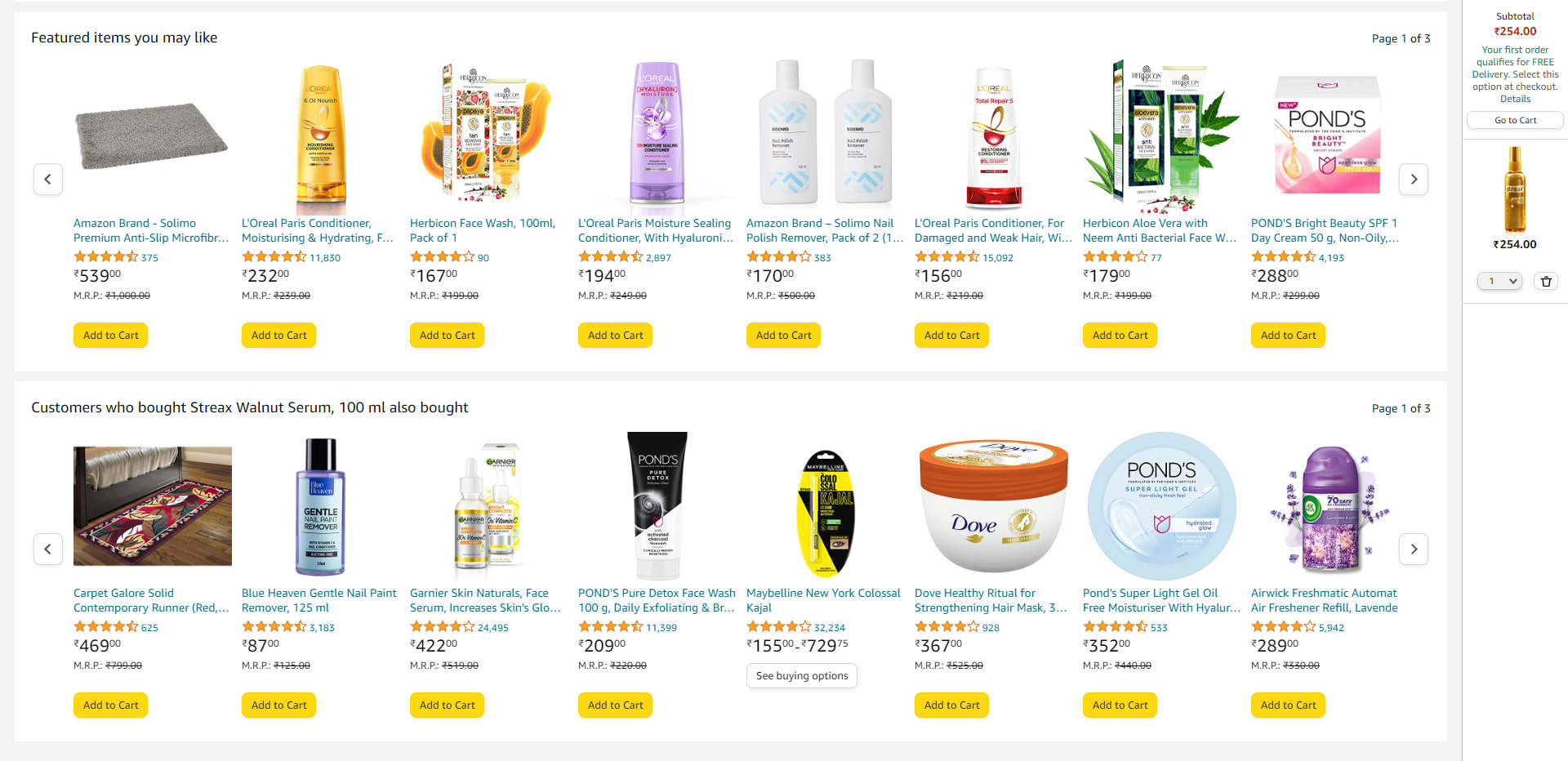
What are the 4 stages of customer retention?
The customer retention process typically involves four stages:
Onboarding: This stage focuses on making a positive first impression and ensuring a smooth transition for new customers. Effective onboarding involves providing clear guidance, demonstrating value, and addressing any initial concerns or questions. Creating an engaging experience on your website requires thoughtful UI-UX. Get in touch with top UI-UX freelance talent on Fiverr.
Engagement: This stage involves regular communication, personalized interactions, and delivering relevant content or offers to keep customers engaged and active with your brand.
Retention: This stage centers on building long-term loyalty and repeat business. It involves consistently meeting customer expectations, providing exceptional experiences, and offering incentives or rewards to encourage ongoing patronage.
Advocacy: The final stage focuses on turning loyal customers into brand advocates. Satisfied customers become enthusiastic promoters who recommend your brand to others, potentially leading to new customers. Encouraging and facilitating positive word-of-mouth referrals and testimonials are essential at this stage.
By understanding and effectively managing each of these stages, businesses can develop a robust customer retention strategy that nurtures long-term relationships and drives sustainable growth.
How to calculate the retention rate
To calculate customer retention rate, use this formula:
Customer retention rate = [(CE - CN) / CS] x 100
Where:
CE = Number of customers at the end of a period
CN = Number of new customers acquired during that period
CS = Number of customers at the start of that period
Here’s an example:
If you started with 500 customers (CS), gained 100 new customers (CN), and ended with 450 customers (CE) at the end of the month, then:
Customer retention rate = [(450 - 100) / 500] x 100 = (350 / 500) x 100 = 70%
This means you retained 70% of your existing customers during that period.
You can adjust the time period to match your business needs and context (e.g., monthly, quarterly, annually).
What are the five key factors of customer retention?
Customer retention relies on several key factors:
Customer satisfaction: Positive experiences and prompt issue resolution foster loyalty.
Effective communication: Keeping customers engaged and informed about new offerings is essential.
Personalization: Tailoring interactions to individual needs strengthens connections and loyalty.
Building trust: Honesty, reliability, and fulfilling promises establish long-term retention.
Exceptional customer service: Going beyond expectations by addressing inquiries promptly and exceeding customer expectations boosts retention.
Retain your customers better with Fiverr freelancers
By prioritizing the key factors of customer retention, small businesses can enhance retention, strengthen relationships, and cultivate brand loyalty.
When implemented effectively, these customer retention strategies can help SMBs build loyalty, and drive long-term growth. Remember to adapt these strategies to suit your specific business and target audience.
A big part of customer satisfaction is providing exceptional service to your existing customers. Small businesses don’t always have a full-scale customer support team to meet these needs. Get in touch with experienced customer support talent on Fiverr today.
